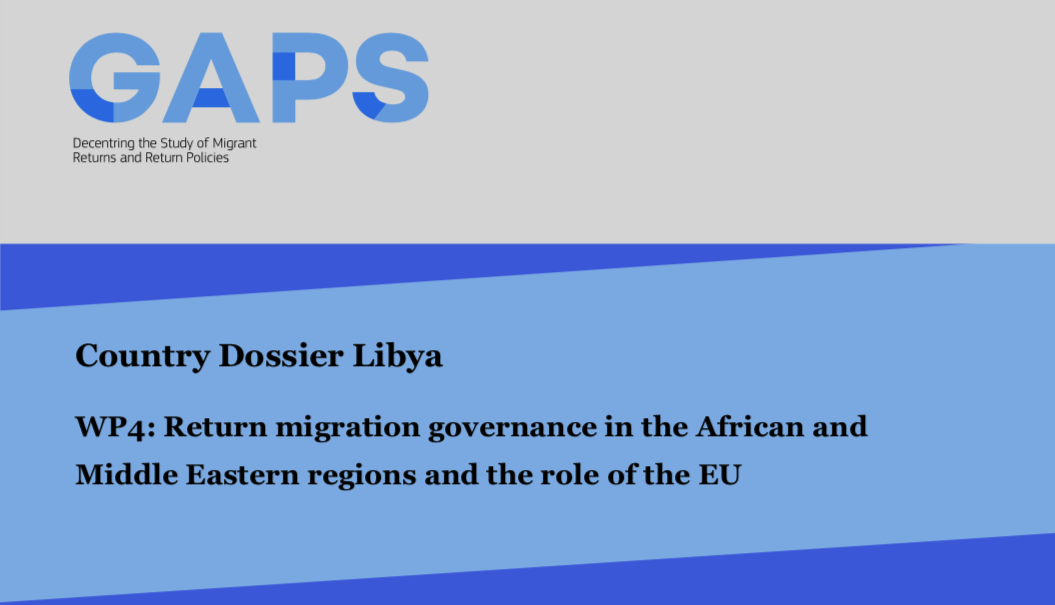Country Profile
GAPs Country Profile: Libya / Publications
This report explores return migration governance in the African and Middle Eastern regions and the role of the EU by looking at the governance of coerced returns from Turkey, Lebanon, Jordan, and Iraq to Syria; from Morocco, Tunisia, and Libya to Nigeria; and from Iran and Turkey to Afghanistan.
This study is situated in a CONTEXT where the migration management of the African and Middle Eastern host countries under study has increasingly focused on return.
This country dossier examines the governance of return migration from Libya to Nigeria, conducted as part of WP4 of the GAPS–Decentring the Study of Migrant Returns and Readmission Policies in Europe and Beyond project. Based on a range of primary and secondary data, it explores the regional and international dynamics influencing return migration. Libya, a North African country with a significant Mediterranean coastline, was once an immigration hub under the leadership of Muammar Gaddafi, who ruled from 1969 until his fall in 2011. Gaddafi’s Pan-African policies attracted labour from across Africa, including Nigeria, a populous West African nation. However, following Gaddafi’s ousting, Libya transitioned into a primary transit point for sub-Saharan African migrants aiming to reach Europe. The ensuing political vacuum allowed militias to gain control over crucial migration routes and detention facilities, making migration governance even more challenging. Return migration from Libya can be voluntary or forced. The Voluntary Humanitarian Return (VHR) program, managed by the International Organization for Migration (IOM) with financial support from the European Union (EU), aids migrants who choose to go back home. However, the “voluntary” aspect is complicated, as many migrants opt for this path due to the harsh and often abusive conditions in detention centres.



